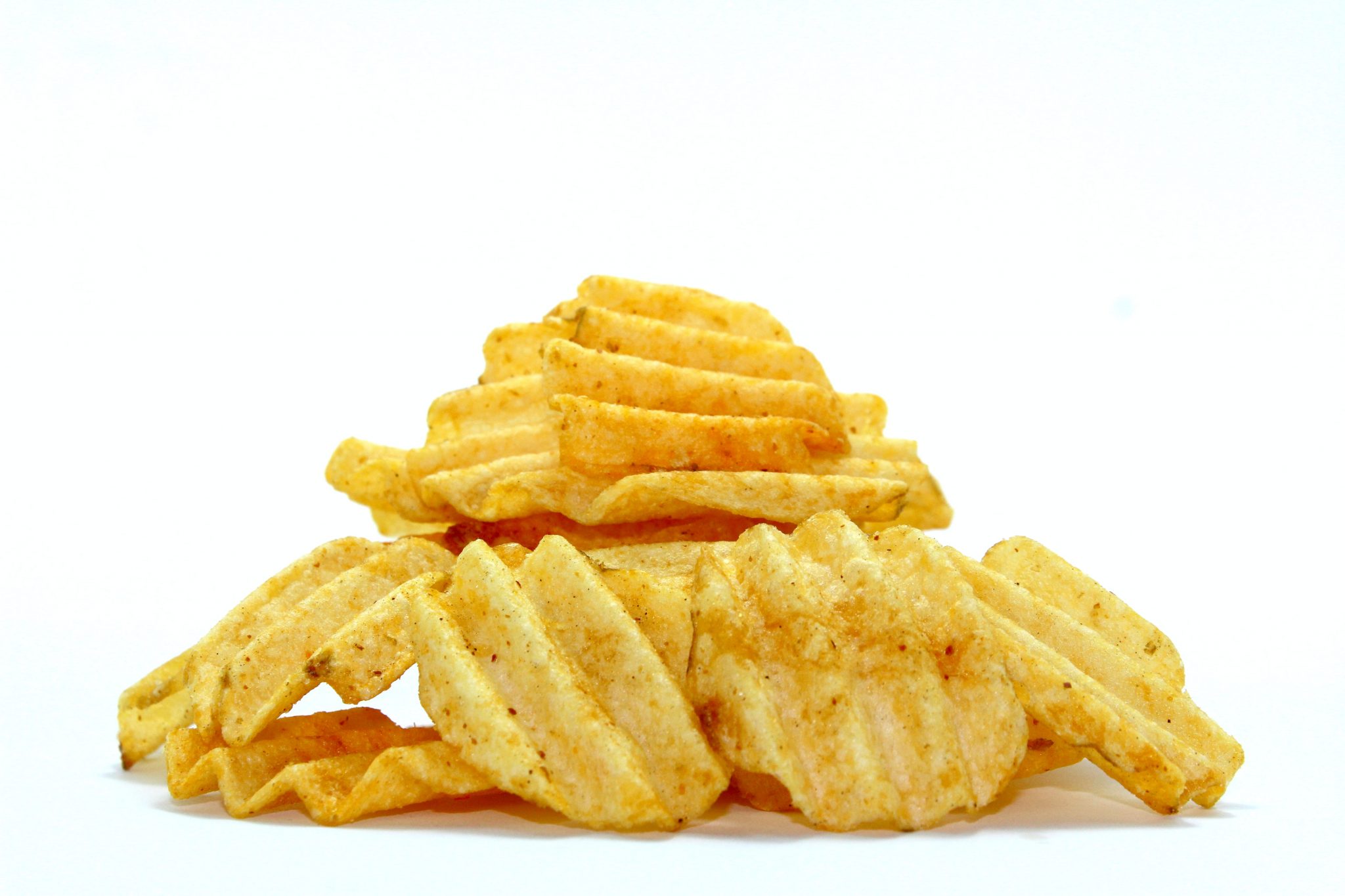
Potato chips as they are known in the USA or crisps as we call them in the UK and Europe have always had a solid position in consumers minds. Just as a reminder, these are those thinly sliced potatoes that are either deep fried or baked until they crunch and crack in the mouth. Always acceptable as a party snack or just something to munch on as part of a side with salad.
The Manufacturing Process
The manufacturing process produces the standard potato chip by definition. The traditional chip is usually rinsed in cold water so that the starch is released from the surface. That means that when it is fried or baked the surface is always free of residual powder and so produces a free, reasonably clear and smooth texture. It also means a better crunch.
Given the situation with Covid-19, a number of producers have seen their sales and market share of the snack market increase considerably. One of the main reasons has been the growing trend for low-fat snacks generally and with it improvements in texture. One of the main issues in recent years has been the inability to match the sensory qualities of their full-fat siblings.
New techniques are now being employed to understand what it is about a low-fat potato chip for example that means it has a boost in flavour profile. One of the key features of the low-fat chip is the reduced amount of vegetable oil employed in frying. When the level of oil in frying or cooking is reduced, the taste and flavour qualities of the chip seemed to go down. One piece of research found that coating the low-fat chip with a thin layer of oil and containing some emulsifier produced some of the best quality crisps although it still did not meet their full-fat counterpart in terms of flavour (Boehm et al., 2019).
Other forms of cooking are now in vogue. Baking using convective oven technology is more to the fore. Batch processing also means there is a stronger ring of individuality about the product rather than one produced by continuous cooking which we’ll just elaborate on. Vacuum frying is a popular option where the frying process that is carried out under pressures well below atmospheric levels, preferably below 50 Torr (6.65 kPa). Because the pressure is lowered, the boiling points both of the oil and the moisture in the foods are lowered.
Kettle chips and hand-cooked chips are commonplace. Whilst crisps and chips have long been cooked in a batch process, the move to continuous processing has been rather drawn out. One reason is that continuous cooking requires the chip to be passed through vats of hot oil and then dried on a conveyor process. It works but that hasn’t led to the demise of the kettle chip by any means.
The entrepreneurial business, Cape Cod Potato Chips started producing a thicker chip which needed to be batch cooked. One of the main straplines of the kettle chip is ‘hand cooked’ which is also the name given to this version of the crisps in the United Kingdom. This is because it is usually claimed to be a small-batch manufacturing process with better control of temperatures. These chips which have greater thickness are also cooked at the ‘right’ temperature. Unlike traditional crisp manufacture, the surface starch is not washed away so the surface is more like a roast potato in texture.
What are the ideal characteristics of potatoes to be used and are there any particular preferred varieties?
The ideal potato for making potato chips should have the following qualities.
- Low Moisture Content: Potatoes with lower moisture content are preferred for chip production because they result in crispier chips. High moisture content can lead to limp or soggy chips.
- High Starch Content: Potatoes with a high starch content, often referred to as “starchy” potatoes, are ideal for chips. Starchy potatoes produce chips that are light and crispy.
- Low Sugar Content: Potatoes with low sugar content are preferred because sugar can caramelize during frying, leading to dark-colored and off-flavored chips.
- Uniform Size and Shape: Potatoes used for chip production should have a uniform size and shape to ensure consistent chip thickness and cooking.
- Good Flavor and Texture: The potato variety should have a pleasant flavor and texture that is desirable in potato chips.
While there are various potato varieties used for chip production, the most common and popular ones include the following-
- Russet Burbank: Russet Burbank is one of the most widely used potato varieties for making potato chips. It is known for its high starch content, low sugar content, and large size. These characteristics make it a top choice for chip production.
- Atlantic: Atlantic potatoes are another popular choice for chip making. They have a good balance of starch and sugar content and produce chips with a light color and pleasing flavor.
- Shepody: Shepody potatoes are favored for their low sugar content and high yield of quality chips. They are known for producing chips with a smooth texture and light color.
- Chipeta: Chipeta potatoes are specifically bred for chip production. They have excellent frying qualities, resulting in chips with a uniform and attractive appearance.
- Lady Rosetta: Lady Rosetta is a variety known for its low sugar content and is commonly used in chip production, especially in certain regions.
- Maris Piper: Maris Piper is a popular variety in the United Kingdom and is often used for making chips. It has good flavor and texture characteristics for chip production.
- Chieftain: Chieftain potatoes are known for their high starch content and are suitable for making chips with a light and crispy texture.
Frying Oils For Potatoes
Frying potato slices for French Fries or chips depends on the quality of the oil used. Warner et al., (1994) assessed potato chip stability with six canola oils (low-erucic acid rapeseed oils). The unmodified canola oil produced potato chips of lower flavour and oxidative stability compared to other types of frying oil which has been bred or hydrogenated. It appears hydrogenation produces a flavour typical of that type of oil. The oil with the highest oleic acid content (around 78%) which was a modified canola oil produced a chip of modest sensory quality. The best potato chip was created using a modified/blended oil (IMC 01-4.5/129) with 68% oleic acid, 20% linoleic acid and 3% linolenic acid.
The Marketplace
The Salt Issue
Potato chips/crisps have suffered from their health issues. Most of the chips contain higher levels of salt, usually from the flavouring. This has been linked to health issues of high blood pressure and hypertension. There is however less salt in a serving than in servings of other products including cereals.
The other issue to be dealt with is acrylamide although this hasn’t affected the market considerably. It is probably down to the ability of the manufacturers to improve their quality control and there is scant evidence anyway for the presence of this particularly noxious chemical.
By 2013, it was estimated that the snack food market was $31 billion according to an IBISWorld market research report. In 2016, the snack food market was generally set at $ 36 billion but in 2019 reached $42 billion and is set to rise further as more of us stay at home and literally snack on whatever comes to hand. They still account for between 33% and 35% of the savory snack market share.
Under most circumstances, potato chips are moving towards a healthier version although as we shall see later, sweet and savoury and mash-ups are also all the rage. Many producers will create different coated variants for particular holidays. Halloween and New Year celebrations are often great times to see innovation in this market.
Another flavour trend is sweet and salty.
What else? Look for ‘suitable for vegan and vegetarian’.
Producers
Lays are probably the USA’s largest maker of the salty snack. They are extremely innovative and often astound the market with some of their novel ideas. A number of smaller producers are usually forced to create new flavour combinations or different coatings to meet the market.
In the UK it is Walkers which holds 55% of the marketplace. In truth very few of us really want to change flavour in the UK. The ‘ready salted’ version which is the original according to market research is still the most popular flavour and increasingly so with an older population according to market research. The newer flavours include the ‘Sensations’ range which covers off more unusual combinations such as Thai Sweet Chilli. This brand also likes the public to choose flavours which creates new news. Over the years they have chosen a number of different types based on locality.
The Ruffles brand is the main Canadian producer and has a long association with high quality produce. They are recognizable by their fine ridged potato snack. One of their best flavours is ‘All Dressed’ which is a mix of salt, onion and pepper. It is very popular across the southern border into the USA.
Also check out players such as Planters, ConAgra and Kettle (owned by S-L Snacks National) who have all dipped their toes into creating new flavour combos.
Own-label and private-label producers also heavily populate the marketplace.
Cape Cod has been operating since 1980. In Spring, 2018, it launched a thick-sliced, wavy-cut range of chips. The three flavour line-up included see salt, a 40% reduced fat variant also with sea salt and their version of a cheese flavour being strong cheddar.
In June 2020, Amplify Snack Brands which is based in Austin, Texas brought in Krakatoa Hot Chips. These are extremely hot and reflects a growing trend for extremely spicy chili flavours. They have measured the level of heat using the famous Scoville unit. There are five different flavours:-
- Sour King – Zesty lime with serrano pepper (5,840 SHUs)
• Hot Hot Honey Pot – Spicy honey with scorpion chili (6,360 SHUs)
• Mustard’s Revenge – Hot dijon mustard with cayenne pepper (9,490 SHUs)
• Kung Pow! – Thai chili with Szechuan pepper (14,500 SHUs)
• Black Magic – Creole heat with ghost pepper (38,700 SHUs)
Shapes
The essential shape of the potato chip is still a rounded slightly oval shape with the the crisp having been shaped according to the slicing of the potato. Some potato chips/crisps are hexagonal or square shaped and make quite a feature of this. You can also find crinkle-cut and wavy chips. What does it all mean? Well, the range of shapes hasn’t really changed in the last 20 years. You can find all sorts to suit.
Flavours
Flavour is always a mainstay of the product developer and usually a quick and easy way to generate new ideas and inject life into a market. From time to time, a new flavour is needed to make the older flavours bright and shiny.
The crisp/chip is the one snack that can really hold a bold flavour. That may explain why there is such a high degree of innovation in the flavour profile for a potato chip. The potato is a blank canvass for flavour anyway so we can always expect the unexpected. The one area that has yet to gain real ground is the unopposed sweet flavour. Having said that in roads have been made with the likes of sweet chilli and son on.
The standard flavour is salt. In the early years it was the only flavour and then variants on this theme began with salt and vinegar. That flavour is a throwback to the original fish and chips in the UK. Some variants describe vinegar which is balsamic and are able to use the “Aceto Balsamico di Modena IGP” title.
Cheese and onion has also gained credence. Generally a non-descript cheese flavour it has become one for officionados who now expect specific cheeses such as cheddar or Wensleydale.
In recent years, market research has shown us that we are becoming much more adventurous in trying ethnic cuisine for example. In fact, 75% according a Mintel report in Summer 2016 found us becoming more interested in what the world had to offer.
Frito-Lay (PepsiCo) offered a range of four flavours from around the world for us to sample in 2016. This is inline with the increased level of travel that we are all experiencing. They include Brazilian Picanha, Chinese Szechuan Chicken, Greek Tzatziki and Indian Tikka Masala. These flavours appear to cover all the corners of the globe.
Sustainability is one growing trend as is the desire for less air-miles in food production. Kettle in the UK claim to be able to produce their crisps from potatoes grown within 30 miles of the processor in Norfolk (when supply allows – note).
Coatings
Coatings come in all shapes and sizes. Some of the main players are still getting to grips with the marketplace. If pretzels can be the coating for ice-cream and for these particular snacks to get the chocolate dipping treatment then it should not be a surprise that potato chips also get the chocolate coating treatment.
Lays back in late 2013, launched their original potato chip range covered in milk chocolate which must have been a first. It is what is termed a sweet and savoury mash-up.
We’ve also thought about faux cheese toppings for crisps as an idea. It might look and taste and like cooked cheese but there is a marketplace for this type of food.
Packaging
Most potato chips are filled into laminated packs but canisters have also stolen some of the light. Canisters are a good way to present what is a uniformly shaped crisp.
What of the future?
Dieting is major focus for many so potato chips that come into this category should gain traction. If it was feasible to have a keto diet based potato snack than the world would open up but carbohydrate to any extent is the enemy of this food.
The gluten-free claim is one that potato chips could grab a greater hold of. A few businesses have launched in this area. The Good Crisp Company launched back in 2017 with a line of non-GMO and gluten free canister potato crisps.
References
Warner, K., Orr, P., Parrott, L., & Glynn, M. (1994). Effects of frying oil composition on potato chip stability. Journal of the American Oil Chemists’ Society, 71(10), pp. 1117-1121.
Article revised 7th September 2023 from original. New post includes varieties and ideal qualities for potatoes.



Leave a Reply